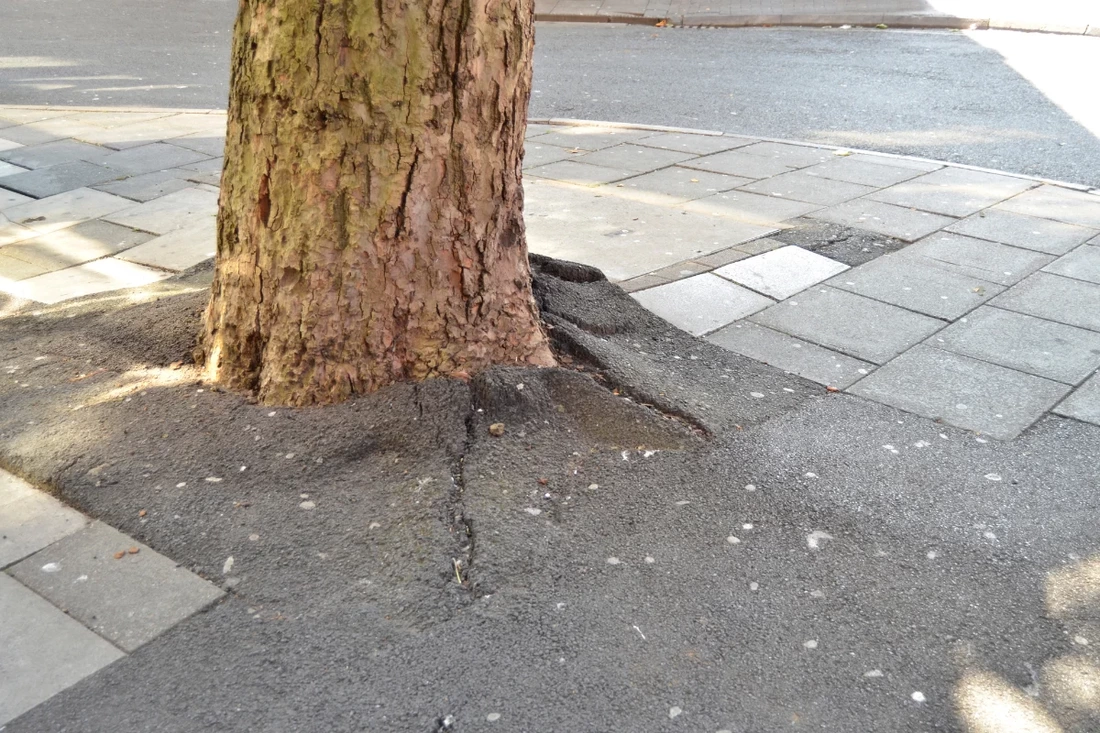|
Tree root control is essential to maintaining the health and stability of trees in your landscape. As a homeowner, it's crucial to understand how tree roots function and the best practices for managing them effectively. This comprehensive guide will explore various aspects of tree root control, root systems, and management. Assessing Tree Roots and StabilityMBefore attempting to remove visible tree roots, it's crucial to consider the age of the tree and its stability. Removing large roots can destabilize a healthy tree, causing potential hazards in your lawn or property. Learn how to assess which roots are safe to remove without compromising the health and safety of your trees. Identifying Essential Root Systems for Tree StabilityAn essential part of assessing root systems is understanding their role in providing stability. Larger, structural roots anchor the tree firmly into the ground, while smaller feeder roots absorb water and nutrients from the soil. Therefore, removing significant structural roots may cause instability issues. Signs That a Tree May Become Unstable After Root Removal
Using Rock Salt as an Effective SolutionUsing rock salt is one effective method for stopping unwanted tree roots from sprouting in your lawn. How Rock Salt Inhibits Root GrowthSodium chloride, more commonly known as rock salt, dehydrates plant cells, inhibiting the development of new roots and killing off existing ones. When applied around the base of a tree, it absorbs moisture from the soil and surrounding tree root systems. As a result, this prevents new roots from developing and eventually kills off existing ones. Proper Application Methods for Using Rock Salt Around Trees
Trimming Lawn Around Exposed Tree RootsMaintaining a neat appearance in your lawn despite exposed roots can be achieved by trimming around them with a cordless weed eater. Selecting Appropriate Tools Like Cordless Weed EatersA cordless weed eater is an excellent choice as it offers maneuverability and convenience when working around root systems. Lightweight and simple to operate, cordless weed eaters provide the convenience of no cords or fuel required for maneuverability in areas with exposed roots. Techniques for Precise Trimming Around Exposed Roots
Cutting Tree Roots - Pros and ConsAdvantages of Cutting Problem-Causing Roots
Potential Risks Involved When Removing Significant Portions of a Tree's Root System
Herbicides - Environmental Risks & AlternativesWhile herbicides offer another way to control invasive root systems from spreading across your lawn, they pose significant risks to the environment. The chemicals used in these products can contaminate soil and water sources, affecting plants, wildlife, and human health. Moreover, some herbicides, such as glyphosate, have been implicated in causing cancer. Environmental concerns associated with herbicide use
Eco-friendly options for tree root controlOne eco-friendly alternative is applying rock salt around trees' bases (as discussed earlier), which inhibits root growth without causing environmental damage. Another approach involves the manual removal of problematic roots by cutting them back; however, this should be done cautiously under professional guidance to not destabilize the tree itself. Relying on Tree ProfessionalsTo ensure that your efforts in stopping tree roots from sprouting in your lawn are both effective and environmentally friendly, it's best to rely on professional help. Hiring a professional arborist or tree service provider has several benefits, including expert guidance and assistance. Benefits of Hiring a Professional Arborist or Tree Service Provider
How Professionals Assess Trees' Health Before Implementing SolutionsA thorough assessment of a tree's health is crucial before implementing any solution. This includes examining its age, stability, and signs of disease or decay and evaluating the impact of proposed treatments on surrounding plants and ecosystems. Tree root control can be complex and difficult to implement without the proper knowledge and tools. That's why it's essential to trust the experts at Chilliwack Tree Services to handle your tree root control needs. Our team of professionals has years of experience dealing with invasive root systems and can provide effective solutions that won't harm your trees or the environment. Whether you're dealing with a single tree or an entire yard, our team can help. We offer various tree root control services, including root pruning, root barriers, and tree removal, to help you manage your tree root systems. ConclusionIn conclusion, tree root control is essential for maintaining the health and stability of trees while ensuring safety in residential areas. Proper assessment, use of rock salt, trimming around exposed roots, cutting problematic branches, and eco-friendly herbicides are effective solutions for invasive tree root control. However, it's crucial to hire a professional arborist or tree service provider to assess the health of trees before implementing any solution. If you need help with tree root control in Chilliwack or surrounding areas, contact Chilliwack Tree Services today for expert advice and quality services! Comments are closed.
|

 RSS Feed
RSS Feed